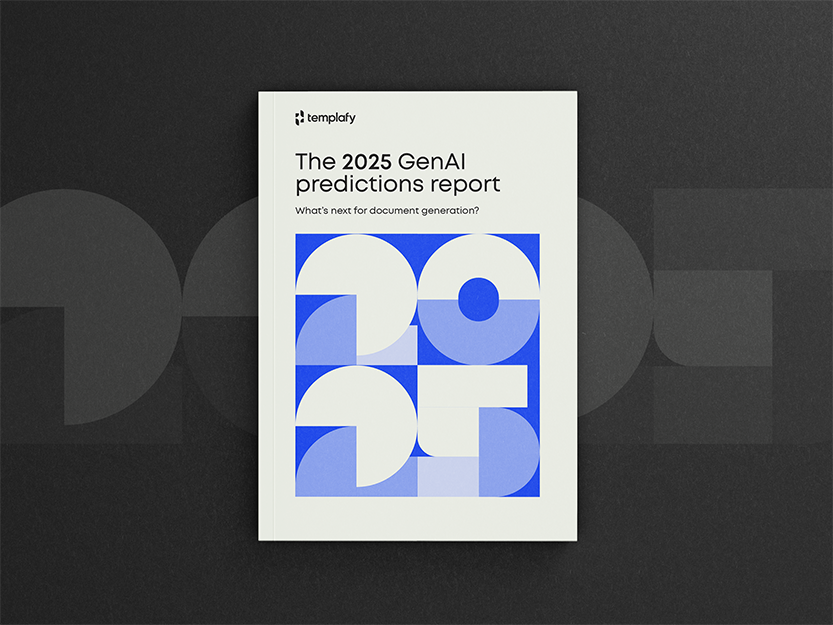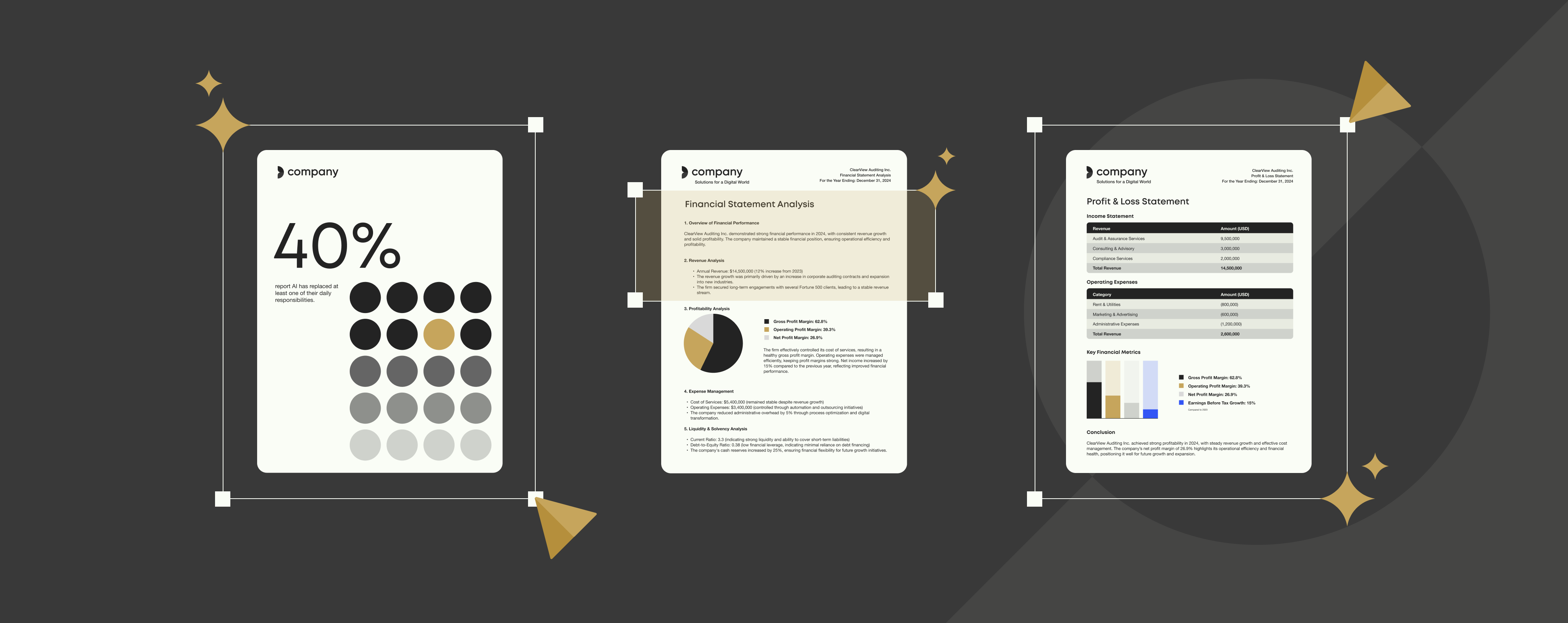AI risk management essentials for secure enterprise adoption

Balancing innovation with security in enterprise AI
When your company implements a cutting-edge AI system, the last thing you expect is for it to go off course—delivering inaccurate results, making biased decisions, exposing sensitive data, or even triggering legal issues. Yet, as AI becomes a core part of many workplaces, especially in large enterprises, these risks are becoming all too common. The rapid adoption of AI has brought incredible opportunities, but it’s also introduced new challenges, from security vulnerabilities to ethical dilemmas.
From the moment AI entered mainstream enterprise use, managing its risks has been a pressing concern. But companies can’t afford to treat AI like a “set-it-and-forget-it” tool. They need a proper strategy to manage AI risks structurally, technologically, and in regard to the people who will interact with it. Enter AI risk management.
What is AI risk management?
AI risk management is the process of finding, reducing, and handling the risks that come with using artificial intelligence (AI) technologies. AI can do amazing things, but it can also cause problems if not managed properly, including biased decisions, data leaks, or system failures. The goal of AI risk management is to prevent these issues from happening and have a strategy in place to maintain ongoing oversight.
In an enterprise context, AI risk management focuses on:
1. Identifying risks: This means figuring out where AI might cause problems. Risks can come from many places, such as:
- Data quality: AI is only as good as the data it is pulling from, so having well-structured, up-to-date data is crucial.
- Data bias: If the data used to train AI is unfair or incomplete, the AI might make biased decisions.
- Model drift: Over time, AI models can become less accurate as they process new data that doesn’t match the data they were trained on.
- Ethical issues: AI can sometimes make decisions that aren’t fair, transparent, or ethical.
2. Implementing controls: Once the risks are identified, companies need to put safeguards in place. These controls can include:
- Bias detection algorithms: Tools that check if AI systems are treating people fairly.
- Data privacy protocols: Rules that protect sensitive information from being exposed.
- Compliance checks: Making sure AI systems follow all laws and regulations.
3. Monitoring outcomes: AI isn’t a static technology. Businesses need to regularly check how AI is performing to catch issues early. Continuous monitoring helps to:
- Spot problems before they become serious.
- Make improvements as needed.
- Ensure the AI stays reliable and accurate over time.
Effective AI risk management requires a holistic approach that integrates technical tools with strong governance and ethical oversight. Failing to address these risks can lead to significant consequences, especially in highly regulated industries.
Uncontrolled AI: What are you really risking?
The risks of unmanaged AI are very real and can have serious consequences for businesses. AI is a powerful tool, but when it’s not properly controlled, it can cause more harm than good.
Here’s what companies are really risking when they don’t manage AI effectively:
- Financial loss: AI systems are designed to make decisions quickly, but if they’re based on faulty data or flawed algorithms, the financial fallout can be huge. For example, AI used in investment strategies might make poor trading decisions, while in supply chain management, an AI system that misjudges inventory needs could cause product shortages or overstocking.
- Legal penalties: Many industries are heavily regulated, and AI systems that don’t comply with laws can get companies into serious trouble. Violating data privacy laws, like the GDPR in Europe, can result in hefty fines. Discrimination laws also apply to AI; if an algorithm is found to be biased, companies could face lawsuits or government penalties.
- Reputational damage: Trust is hard to earn and easy to lose. A single incident where AI provides incorrect information or makes a biased decision can damage a company’s reputation overnight.
- Operational disruptions: AI systems are often embedded in critical business operations. If they fail unexpectedly, it can bring entire workflows to a halt. Imagine an AI system managing an airline’s scheduling or customer service —sudden disruptions could lead to widespread problems and financial losses.
Uncontrolled AI has the potential to disrupt your business, either financially or reputationally. That’s why risk management is an essential part of any enterprise AI strategy.
Understanding different AI risk management frameworks
Organizations around the world use specific frameworks to manage the risks associated with AI. These frameworks provide guidelines and best practices to help businesses create safer, more responsible AI systems. Here are some of the most important ones.
NIST AI risk management framework (AI RMF)
Developed by the National Institute of Standards and Technology (NIST) in the United States, this framework is designed to help organizations identify and manage AI risks effectively.
It focuses on four key areas:
- Governance: Setting clear roles and responsibilities for managing AI. This includes defining who is accountable for AI systems, how decisions are made, and what ethical standards should be followed.
- Mapping: Identifying potential risks throughout the entire AI lifecycle, from data collection to model deployment. This helps organizations understand where things could go wrong.
- Measuring: Assessing the severity and likelihood of risks. By evaluating how big a risk is and how likely it is to happen, companies can prioritize which risks to address first.
- Managing: Implementing controls to reduce or eliminate identified risks. This could involve technical solutions like bias detection tools or policy changes to improve oversight.
The NIST is a voluntary framework that emphasizes flexibility, allowing organizations to adapt its principles to fit their specific needs, regardless of size or industry.
The EU AI act
The European Union AI Act is one of the most comprehensive AI regulations in the world. The AI Act entered into force in August 2024 and will be fully applicable in August 2026 for EU Member States.
It classifies AI systems based on their level of risk:
- Minimal risk: Systems like spam filters that pose little threat to safety or rights.
- Limited risk: AI that requires transparency but doesn’t have a major impact on individuals.
- High risk: Systems used in critical areas like healthcare, law enforcement, or finance. These face strict compliance requirements to ensure safety and fairness.
- Unacceptable risk: AI that is considered too dangerous, such as systems that manipulate behavior in harmful ways. These are banned altogether.
The EU AI Act emphasizes transparency, accountability, and human oversight. Its goal is to ensure that AI technologies are safe, ethical, and respect fundamental human rights.
ISO/IEC standards for AI management
The International Organization for Standardization (ISO) and the International Electrotechnical Commission (IEC) have developed global standards to help organizations manage AI risks.
These standards focus on:
- Data quality: Ensuring the data used to train AI is accurate, complete, and unbiased.
- Security: Protecting AI systems from cyber threats and data breaches.
- System robustness: Making sure AI performs reliably under different conditions and can recover from failures.
ISO/IEC standards are used worldwide and help organizations create consistent, high-quality AI systems. They provide a common language for discussing AI risks and best practices.
GenAI you can trust
The second wave of GenAI is here, and it will belong to businesses that make AI a core part of their daily workflows.


How to build an AI risk management strategy
Effectively managing AI risk starts with a robust, thoughtful strategy to help protect your business from potential threats. Here’s a step-by-step plan to help you get started.
ai
8 steps
- Step 1: Identify risks
- Step 2: Develop policies
- Step 3: Implement controls
- Step 4: Monitor continuously
- Step 5: Align stakeholders
- Step 6: Foster a responsible AI culture
- Step 7: Conduct audits
- Step 8: Plan for incident response
Step 1: Identify risks
The first step in managing AI risks is to identify them. This means looking at every part of your AI system, from the data it uses to the decisions it makes.
Start by asking questions like:
- Where does our data come from? Data can be outdated, incomplete, or otherwise inaccurate, which can lead to flawed AI decisions.
- Is our AI model making fair decisions? Sometimes, AI models unknowingly favor certain responses over others due to biased or uneven training data.
- What are the technical vulnerabilities? Could the AI be hacked or manipulated?
- How could this AI fail operationally? Think about system crashes, incorrect outputs, or unexpected behavior in real-world conditions.
Mapping out these risks helps you understand where your AI might fail, giving you a clearer picture of what needs to be addressed.
Step 2: Develop policies
Enterprises need clear, written policies that outline how your organization will manage AI risks across the organization. Your policies should cover:
- Data privacy: How you protect sensitive information.
- Ethical considerations: Guidelines to ensure fairness, transparency, and accountability in AI decision-making.
- Compliance standards: Making sure your AI systems meet all legal and industry regulations.
Involve different departments in this process—legal teams, IT experts, compliance officers, and business leaders. This ensures that your policies are both comprehensive and practical.
Step 3: Implement controls
Policies are only as effective as your ability to enforce them. Having proper safeguards means your policies will continue to be effective over time.
Some common controls include:
- Bias detection algorithms: Tools that regularly scan your AI models for signs of bias.
- Encryption: Protects sensitive data from unauthorized access.
- Audit trails: Logs that track how decisions are made, providing transparency and accountability.
Step 4: Monitor continuously
AI is designed to evolve by learning from new data, which means unexpected risks can pop up at any time. That’s why continuous monitoring is essential.
Use real-time monitoring tools to:
- Track performance: Ensure the AI is functioning as expected.
- Identify anomalies: Spot unusual patterns that might signal a problem.
- Flag risks early: Catch issues before they escalate into bigger problems.
Regular reviews and updates are key to keeping your AI systems healthy and secure.
Step 5: Align stakeholders
AI risk management isn’t just the job of the IT department. It requires collaboration across your entire organization. Make sure stakeholders from different areas—legal, compliance, IT, HR, and business units—are aligned on your AI risk management goals.
Hold regular meetings to:
- Share updates on AI projects.
- Discuss emerging risks and how to address them.
- Ensure everyone understands their role in managing AI risks.
Step 6: Foster a responsible AI culture
Building an ethical culture within your organization helps ensure that AI is used responsibly. This means:
- Training employees: Teach staff about the ethical implications of AI and how to use it responsibly.
- Promoting transparency: Encourage open discussions about AI decisions and potential risks.
- Holding leadership accountable: Leaders should set the tone for ethical AI use and lead by example.
Step 7: Conduct audits
Even with strong controls in place, it’s important to regularly audit your AI systems. Audits help you identify gaps, measure performance, and ensure compliance with laws and regulations. Consider:
- Internal audits: Conducted by your own team to review processes and identify issues.
- Third-party audits: External experts can provide an unbiased assessment of your AI systems and risk management practices.
Step 8: Plan for incident response
Finally, no matter how well you prepare, things can still go wrong. That’s why having an incident response plan is crucial. This plan should outline:
- How to respond: Clear steps to take when an AI-related issue occurs.
- Who’s responsible: Assign roles and responsibilities for managing incidents.
- Communication strategies: How to communicate with stakeholders, customers and the public during a crisis.
The faster and more effectively you respond to incidents, the less damage they’re likely to cause.
Embrace AI with confidence
AI has the power to boost productivity, spark innovation, and enable smarter decisions. It’s a game-changing technology—when used responsibly. While the risks are real, they shouldn’t hold you back from exploring or adopting new AI solutions.
Risk management isn’t about slowing down AI, it’s about building trust so innovation can flourish. Think of it like training wheels for technology: we’re not here to restrict progress, but to create frameworks where breakthroughs happen safely and responsibly. Just as companies have cybersecurity protocols or financial controls, AI risk management is simply the cost of doing business in a world powered by intelligent systems.
With the right safeguards in place, businesses can embrace AI with confidence—driving growth, improving accuracy, and creating new opportunities.
Explore Templafy’s enterprise-ready AI solutions
Templafy’s AI Assistant offers a solution designed to help large enterprises harness the power of AI safely and effectively. It’s built with risk management in mind, ensuring your AI-driven processes are compliant, secure, and aligned with your business goals.
With Templafy’s AI Assistant, you get:
- Built-in compliance with enterprise-grade security measures.
- Easy integrations into your everyday tools and preferred AI models.
- Customizable models and prompts to get consistent, accurate outputs.
The potential risks of AI may be complex, but managing it doesn’t have to be. Let Templafy’s powerful automation and AI solutions help you stay ahead of the curve.



